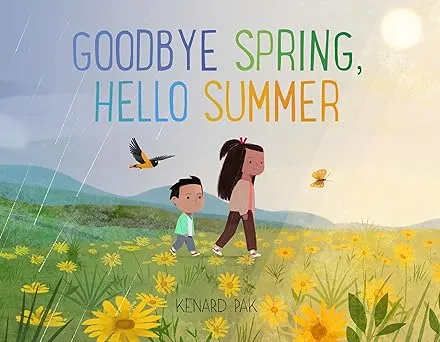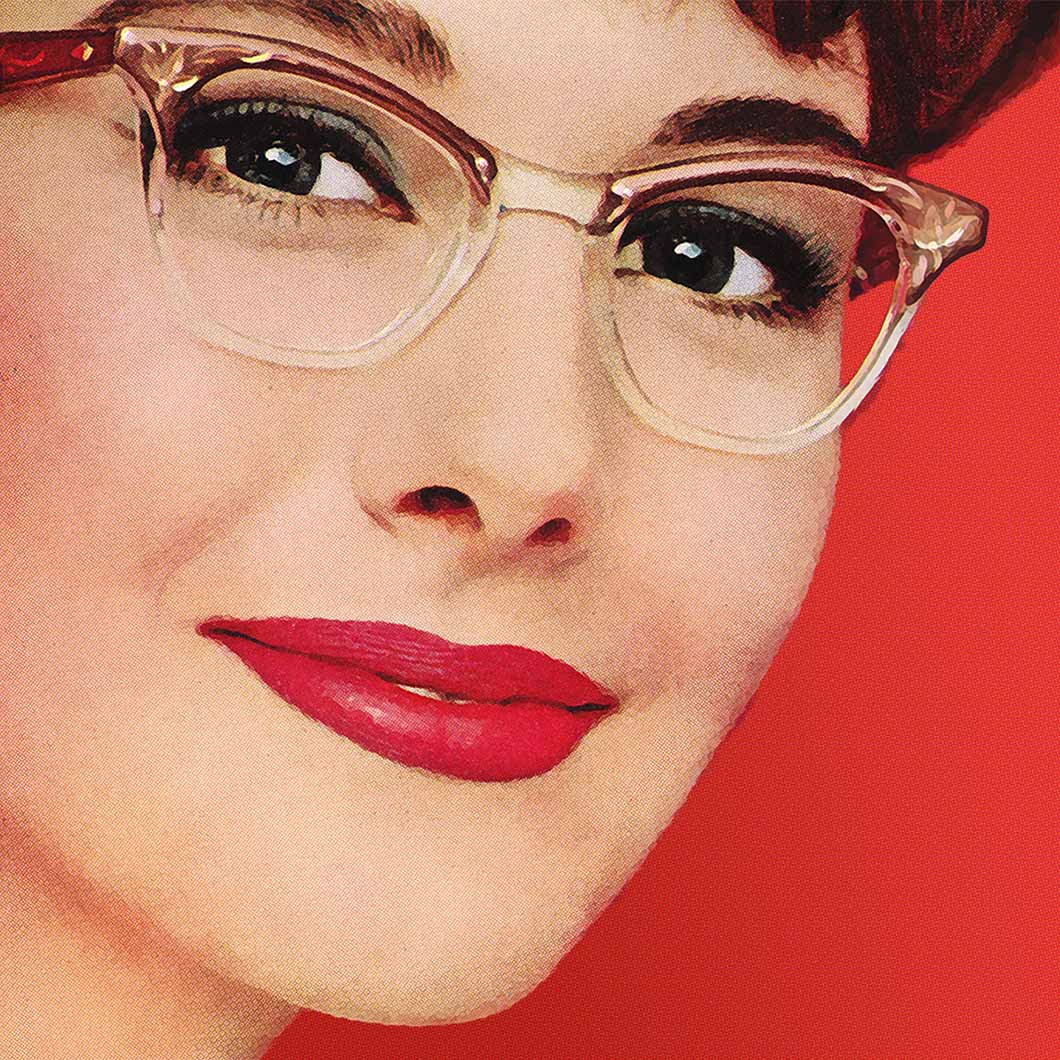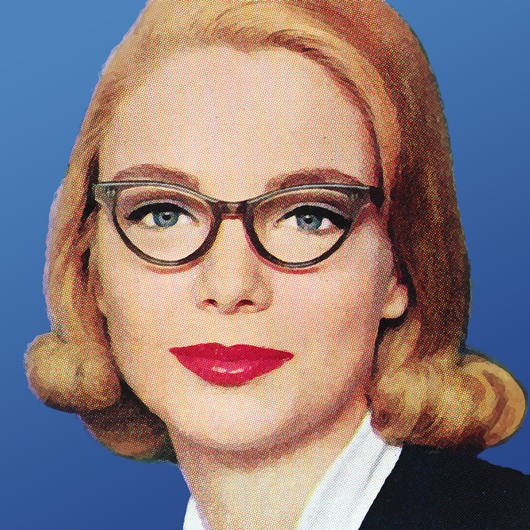Who were we? Where did we come from? What did we look like, trudging up the hill between Convent Avenue and the subway, sitting obediently in class, arguing madly as soon as the bell rang?
We were the children of tailors, shopkeepers, factory workers; accountants, bakers, dress cutters; clerks, milkmen, bus drivers. Our shoes were scuffed, our clothes came from chain stores, our haircuts from neighborhood barbershops and “beauty parlors.” And what did we know of the world? Nothing. At the same time, how many of us were wise beyond our years.
One afternoon during an English lit class a number of us were buzzing about a boy sitting in the back of the room who looked nothing like us. He was slim and good-looking, his haircut a work of art, and he was wearing a navy-blue sweater—the wool was thin—that lay beautifully flat on his chest. I thought he was French. The girl in front of me twisted around in her seat and whispered, “He’s from Bard.” The girl on my left said, “Where’s that?” The girl on my right said, “What’s that?” But when the teacher asked us why Isabel Archer went back to Gilbert Osmond at the end of The Portrait of a Lady, and a number of students, in perfect imitation of Henry James, called out that morally speaking that was the right thing to do, it was the girl on my right who said, “She’s afraid of herself.”
And there you had City College: unworldliness eclipsed by the insights of lived experience. Throughout the school’s history “lived experience” had held pride of place, and I daresay it still does. Not so many years ago I was told that a writer who had taught at two posh schools and then at City College said, “At Chicago all they wanted to know was, What’s the theory? At Yale all they wanted to know was, What’s the technique? At City all they wanted to know was, How does this relate to real life?”
“Let the children of the rich and poor take their seats together and know of no distinction save that of industry, good conduct and intellect.”
The year was 1847, and the words were those of Townsend Harris, the progressive head of New York’s Board of Education who, in the midst of the Industrial Revolution, foresaw a small-town future for New York unless the city started educating a greater proportion of its native population to become the teachers, lawyers, doctors, administrators necessary to run a major metropolis; this meant, largely, turning to the children of those immigrants (at the time mainly from Northern and Western Europe) who were either dead poor or not affluent enough to send them to one of the city’s private institutions, chief among those Columbia College and the University of the City of New York (the future New York University).
Because of the remarkably large number of progressives—men who responded favorably to Harris’s prod—in city government at the time, a statewide referendum was floated on the question of whether to support a tuition-free school of higher education in New York City, and in June 1847 the referendum was ratified by a vote of 19,305 in favor to 3,409 against. Surprisingly, among the nays was Horace Greeley, the famous founder and editor of the New-York Tribune and later a member of the city’s Board of Education. Greeley was neither the first nor the last prominent New Yorker to argue against the expenditure of public funds for this project; it is the historic bane of our shared social existence that what looks sufficient to those on one side of the aisle to secure a decent life for a nation’s citizens seems pitiably insufficient to those on the other. And so it has gone for the nearly two hundred years since, with regard to municipal support for public higher education nationwide.
As there was no public high school system at the time—after eighth grade almost everyone went to work—the school was conceived as a combination prep school and college. Originally known as the Free Academy, it opened its doors on January 21, 1849, in a building on the corner of 23rd Street and Lexington Avenue, to an entering class of 143 boys between the ages of thirteen and fifteen. At its opening assembly the president said:
The experiment is to be tried, whether the children of the people—the children of the whole people—can be educated; and whether an institution of learning of the highest grade can be successfully controlled by the popular will, not the privileged few but by the privileged many.
And thus was born the first tuition-free school of higher learning in the country.
The first class was admitted upon the recommendations of grammar school principals and examinations in reading, writing, grammar, geography, arithmetic, and the history of the United States. Once admitted, students undertook to follow a curriculum that consisted of mathematics, history, language, literature, drawing, natural philosophy, experimental philosophy, law, and political economy (try that one today).
The students were mainly the sons of artisans and factory workers, as well as merchants and businessmen. Those in the first category were less likely than those in the second to stay the full course—they often had to go back to work—but from among those who did graduate came a rich cache of professionals (lawyers, doctors, architects, clergymen, teachers) who served the metropolis well, and often went on to become prominent in New York City government, a record that continues to this day.
In 1866 the Free Academy was renamed the College of the City of New York, and in 1929 its name was changed to the City College of New York, and then finally it became the City College of the City University of New York. Today it boasts a student population of more than 15,000 undergraduates and graduates studying across eight professional schools and divisions. Historically speaking, it also boasts the first student government in the nation (Academic Senate, 1867); the first national fraternity to accept members without regard to race, religion, color, or creed (Delta Sigma Phi, 1899); the first degree-granting evening program; and the first general strike led by students—the 1969 strike, which won them open admissions. To date the college has graduated ten Nobel Prize winners.
Every girl I grew up with went to secretarial school after high school—we’d all gone to Theodore Roosevelt High School in the Bronx—and then got married; end of story. I was the only girl on the block who went to college. And how, one might ask, did that come about?
It was my mother who had encouraged me to take the academic, not the commercial, course when I entered high school. This had been an act of stubborn courage on her part because at the time she was barely holding the house together—my father, who died young, had been gone only a few years—and she knew that her family had expected me, at the age of seventeen, to go out and get a job.
So I went to City and I majored in English. When I graduated and she discovered that I wasn’t a teacher—she’d assumed that a girl goes in one door marked “college” and comes out another marked “teacher”—she felt tricked, as I recounted in a memoir in the 1980s.
“You mean you’re not a teacher?” she asked, eyes widening as she planted my diploma down on the kitchen table.
“No,” I replied.
“What have you been doing there all these years?” she demanded, dumbfounded.
“Reading novels,” I said. I might just as well have said, “Preparing for inter-planetary travel.”
Wordlessly, she marveled at my chutzpah. And in a sense, I did too.
“Whatever you do,” laughed my unhelpful big brother, “don’t learn stenography!”
My mother didn’t know what he meant, but I did: learn steno and the college education goes down the drain, I’d settle for a glorified secretarial job, get married, and call it a life. Which was pretty much the course my girlfriends had followed minus the four wasted years in college, thank you very much, and the one my mother’s family certainly thought appropriate for me, whose intellectual snottiness they found either puzzling or enraging. Even the relatives who thought they loved and admired me couldn’t understand why I was delaying the obvious and the inevitable: a good job and an even better provider—especially the latter.
When I was growing up and daydreaming of becoming a student at City College, it never occurred to me to consider the overwhelming Jewishness of its student population as a factor of note. This, no doubt, was because I came from a left-wing household where the question of class, not ethnicity, prevailed. So when I got to college I was only aware of the students as strikingly working-class—which is why, I imagine, I felt at home the moment I set foot on Convent Avenue. But of course it was mainly a Jewish working class into which I had so naturally melted. Thus it was that I didn’t know—that is, really know—that the whole world wasn’t Jewish until I graduated from City. To a large degree I credit this experience with making and keeping me the urban provincial I am to this day. It is only now that I see the Jewishness of City College as a classic demonstration of one of the odd ways in which the American “experiment” with public higher education developed.
Throughout the better part of the nineteenth century hardly any immigrant from Eastern or Southern Europe imagined sending a child to college; if you dreamed of improved lives for your sons (only the sons), it was through making good in some entrepreneurial enterprise, not through more schooling. However, the great wave of immigration into the United States (from 1880 to 1920) coincided with the nationwide explosion of the demand for public higher education, and the Jews as a whole—and this was the game changer—responded more quickly to the possibility of educating their children than did other ethnicities. By 1902 an editorial in the Yiddish newspaper The Forward could observe, “You don’t find many German, Irish, or Italian children in City College. About 90 percent of the boys there are Jews, and most of them children of Jewish workers.”
These Jewish boys were in fact no more intellectually gifted than the sons of any of the other immigrant cultures; they were, however, famously the progeny of a culture that characterized itself as the People of the Book, fiercely motivated by an inherited reverence for learning coupled with a passion for either getting on in the world or changing the world. From birth on, these children had been urged to believe they must do better, make a mark, succeed. Thus was created the stereotype of the successful CCNY student as smart, poor, overachieving: Jewish.
Not, however, cultivated. To be a cultivated college student meant that one was well dressed, a practitioner of Christian manners and mores, and an accomplished sportsman—none of which characterized the Jewish students, ever. In an article entitled “How Jewish Quotas Began” (published in Commentary in 1971), the sociologist Stephen Steinberg tells us that a 1923 article in The Nation observed gleefully that “there are in fact more dirty Jews and tactless Jews in college than dirty and tactless Italians, Armenians, or Slovaks.”
It was these dirty, tactless Jews who made of City College, as Irving Howe, in his industrial-strength history of the Jews in America, World of Our Fathers, puts it, a place both “grubby and exalted.” Bernard Hershkopf, class of 1906, attests to the exalted part:
The classrooms were bare, the chairs and desks of the plainest. The blackboards were grayed over with the chalk dust…. The library was crowded and old…. But, as against that, there were the students. Scores of them thirsted for learning as men long lost in the desert must thirst for water. None could halt or defeat such deep-rooted determination to learn. We knew it as gospel truth that this plain College was for each of us a passport to a higher and ennobled life.
Of course the real reason, many would say, that the high percentage of Jewish students accumulated so early at City College was that first, from the 1920s to the 1960s, there were severe quotas placed on the acceptance of Jewish students at almost every elite private institution of higher learning in the United States; and second, by the turn of the twentieth century the fortunes of third- and fourth-generation Gentile immigrants began to improve so significantly that those among them who shrank from close association with large numbers of Jews began sending their children elsewhere.
Inevitably, the more the school was referred to as “the Cheder on the Hill” (cheder is Hebrew for “house of study”), the more City College was left to the Jews, who, again as Howe tells us, “loved the place, loved it utterly, hopelessly, blindly.” For them,
of all the institutions [the Jewish immigrants] or their children might encounter in the new world, City College came closest to fulfilling Emerson’s promise that “this country, the last found, is the great charity of God to the human race.”
Today, when the Jewish majority at City College has long since been replaced by students of every color, creed, and point of immigrant origin, I daresay many feel the same.
Yet it must also be said that no matter how much our families revered education and wanted us to rise in the world, the experience of a first-generation college student in an immigrant home was bound to be fraught, as the discrepancy between the idea and the reality inevitably created a divide of seismic proportions within the family. In my memoir, I speak intimately of how becoming that first-generation student played out in mine, and with the indulgence of the reader I’ll quote myself a bit. To begin with, I write about what it meant to be a commuter student:
We still used the subways, still walked the familiar streets between classes, still returned to the neighborhood each night, talked to our high school friends, and went to sleep in our own beds. But secretly we had begun to live in a world inside our heads where we read talked thought in a way that separated us from our parents, the life of the house and that of the street. We had been initiated, had learned the difference between hidden and expressed thought. This made us subversives in our own homes.
My emotionally explosive mother never knew what hit her, and very quickly, I think, she was of two minds about City and me:
She had wanted me to go to school, no question about that, had been energized by the determination that I do so…. She hadn’t understood that going to school meant I would start thinking: coherently and out loud. She was taken by violent surprise. My sentences got longer within a month of those first classes. Longer, more complicated, formed by words whose meaning she did not always know. I had never before spoken a word she didn’t know. Or made a sentence whose logic she couldn’t follow. Or attempted an opinion that grew out of an abstraction. It made her crazy….
Why did I have to be such a showoff? Was that what going to college was all about? Now, take Mr. Lewis, the insurance agent, an educated man if ever there was one, got a degree from City College in 1929, 1929 mind you, and never made you feel stupid, always spoke in simple sentences, but later you thought about what he had said. That’s the way an educated person should talk. Here’s this snotnose kid coming into the kitchen with all these big words, sentences you can’t make head or tail of…
She was, of course, right. Only it would take me forty years to realize how right she was.
In a 1944 study of New York City’s public colleges, it was noted that while the intellectual level of the students at City was remarkably high, it was also unfortunately true that the students “frequently feel ill at ease in a social situation and cannot engage in a conversation in other than argumentative fashion.” That sentence speaks volumes to my memories of conversation at City College, at a time when many of the girls—we’d only just been fully admitted to the school in 1951—could and did (and here I include myself) argue just as belligerently as the boys. Meeting up at the lunch table in the cafeteria, where a discussion was usually in progress, we were all, girls and boys alike, immediately enlisted as sparring partners in what always felt like an ideological competition, although it was often impossible to identify the ideology. No matter. Whatever the subject, you took a position and you argued it; that was really all that mattered.
What the 1944 study could not acknowledge was that argumentation did not represent a social failing among working-class Jews—it was a time-honored idiom; it was a way of life. For instance, if my mother ran into Mrs. Bluestein on the corner and Mrs. B said she’d heard it was going to rain, my mother would not say, “Why do you think that, the sun is shining,” but more likely, “That’s ridiculous, the sun is shining.” “That’s ridiculous” is inscribed in a quintessential Jewish activity, Talmudic studies—the perusal of Judaic law as laid down in the Torah. What Talmudists do, in actuality, is dispute one another’s interpretations of the Law point by hairsplitting point, and I mean dispute.
As the generations of immigrant Jews followed one on another, with each one becoming more secular than the last, the convention of impassioned argumentation transferred itself from shtetl religiosity to political modernity. It was during the radicalized 1930s that City College became famous for the depth and maturity of its students’ overheated debating skills, as practiced among a small but significant number of its students who, in response to the highly political atmosphere brought on by the Great Depression—every day, throughout the city, a rally, a meeting, a demonstration, and everywhere picket lines—developed radical debate very nearly to the level of Talmudic studies, except its rallying cry was rather more like “Down with the rabbis, up with the socialists!”
In the 1930s at City College these were nineteen- and twenty-year-old boys arguing like seasoned speakers schooled in the finer points of literature, philosophy, and political theory, as though a world of values was at stake, very often debating like Lenin, who supposedly said, “I do not argue to defeat my opponent, I argue to annihilate him.” Within twenty years many of these Thirties debaters at CCNY would emerge as the country’s most effective public intellectuals, leaving the school in possession of its richly romantic reputation as the Harvard of the proletariat.
And where, one might ask, was all this going on? Answer: in a series of booths lining the student cafeteria, otherwise known as the Alcoves, particularly Alcoves One and Two.
“To understand CCNY in the 30’s it is necessary to understand the Alcoves,” as the writer Meyer Liben noted in a memoir published in Commentary in 1965. “These alcoves were the heart of the college.” Each one was ruled over by one student organization or another—sports, social clubs, student government—but the ones that counted, that is, the ones that made CCNY history, were Alcove One, ruled by Trotskyists (that is, left-wing anti-Stalinists), and Alcove Two, ruled by Stalinists. In actuality, these groupings were rather loose, but everyone in the Alcoves identified as a member of one leftist persuasion or another, as Liben explained:
There were no fist-fights, even when the provocations seemed unbearable. Personalities were supposed to be out—we were arguing positions…. The radicals ranged from right-wing Socialists…to splinters from the Trotskyist left wing. In between was a bewildering variety—Austro-Marxists, orthodox Communists, Socialist centrists and Socialist left-wingers, Kautskyites,…Lovestoneites, Brandlerites, and many another group, faction, or splinter…. We also had in our midst philosophical anarchists, supporters of the IWW, and all kinds of sympathizers, fellow-travelers, and indeterminists.
The polemical urgency that accompanied argumentation when I was at City was certainly not what it had once been—the cold war 1950s were not, after all, the Depression 1930s or World War II 1940s—but still, there was spiritual heat. “It was the passion for argument that was so distinctive,” remembers the writer Stephen K., class of 1957. “Talking literature, for God’s sake, everyone had a position! Literature was converted into politics in that it was talked as a position.” “Yes, yes, yes,” marvels Barry N., class of 1952. “All those smart, wild, intense loudmouths. They never parted their lips without taking a position.”
We did very little else. Most of us came into City College virgins and went out the same way, and all of us were restricted by working-class economics, hardly ever going to plays, concerts, or any kind of paid entertainment. Conversation was our all, and at City in the 1950s, that meant arguing. Arguing was mother’s milk to most of us, the only way most of us had ever known how to encounter another person. Everyone argued: our mothers and fathers, our neighbors, our playmates. You did it well or you did it less than well or you did it badly, but nothing special attached to you because of your skill at arguing or your lack of it. “I never knew I was smart,” says Bobby H., class of 1955,
until I got to CCNY, and right away someone was telling me my position was smart but he didn’t agree with it. I looked at him. I was just talking. Like I did every day of my life on the block. Only here it seemed I had a position. And the guy didn’t agree with it but it was smart.
Actually, Bobby H. was a star at position taking; he’d begun debating his fellow students years before he got to City at the Bronx High School of Science. Ah, Bronx Science! Thousands of CCNY students had graduated from one of New York’s specialty high schools like Bronx Science or Stuyvesant or Brooklyn Tech, where, ostensibly, the highest respect was given to the ability to reason intellectually. But then again, even the word “reason” is disputed by some people. “What was respected,” says a Science graduate of those years. “was the ability to pummel your opponent into the ground with a million statistics.”
For many years I saw myself as a born ideologue, the allure of one systematic devotion or another—socialism, psychoanalysis, women’s rights—exerting its influence on me, each one in turn exciting, poetic, full of yearning and promise; the panic and confusion of life in the moment pushed back, making the world feel magically whole. Once during the 1970s Joan Didion scornfully informed the feminists that ideology did not produce art. She missed the point, did not grasp the rapture of the thing itself, did not understand that ideology flows from the same urgency as art—the need to feel alive within ourselves—and that in some places the streams intermingle. In the mid-1950s I experienced this urgency daily, at lunch in the City College cafeteria, taking a position.



















 English (US) ·
English (US) ·